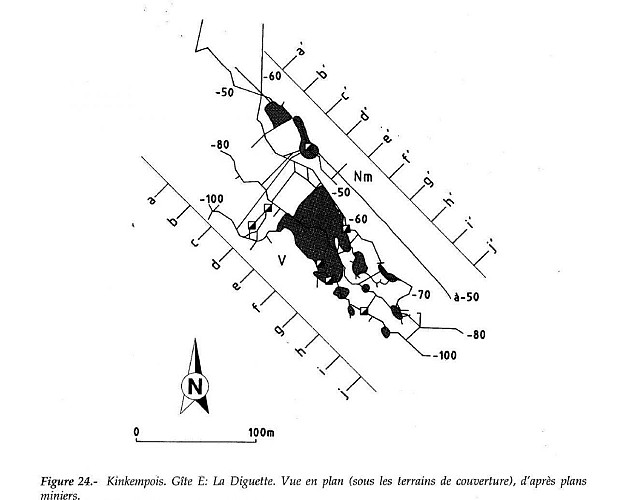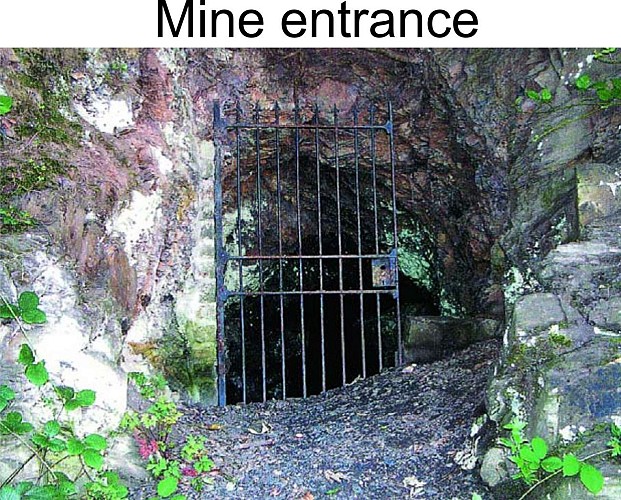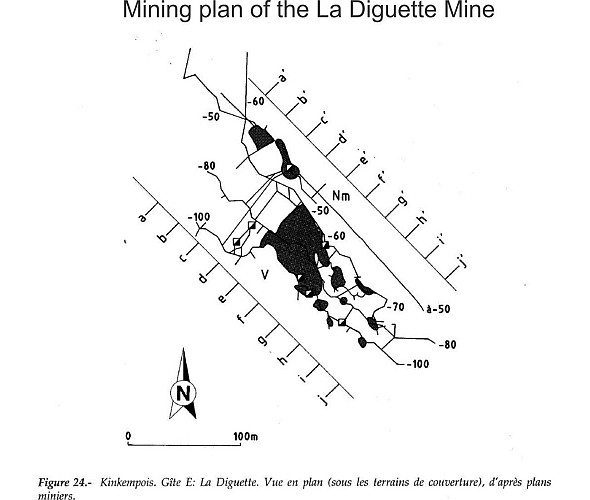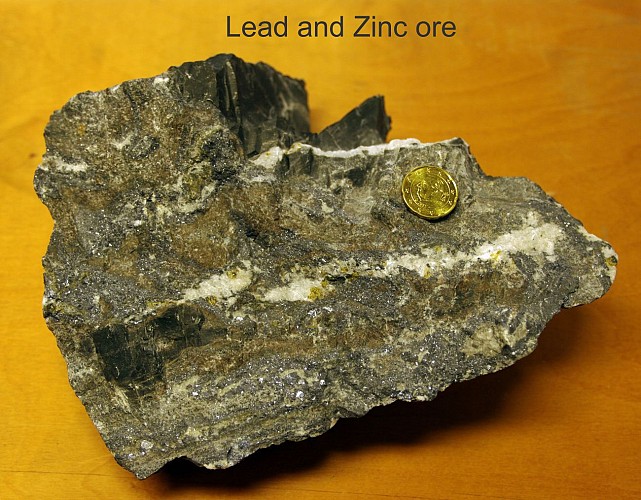Alert
Alerts
Lead-Zinc mine of La diguette




Description
The Diguette mine is an underground mine that was officially exploited from 1836 until 1882 after reaching a depth of -105m.
The ore was first mined for iron (in the form of hydroxides) and then for Zinc and Lead (in the form of sulphides). Between 1853 and 1882, the mines of La Diguette and Kimkempois (whose entrance is on the other side of the hill) produced the following concentrates:
-1900t of sphalerite ((Zn,Fe)S) => Zinc ore
- 2300t of galena (PbS) => Lead ore
- 17500t of pyrite (FeS) => formerly used to produce sulphuric acid to make fertilizer.
This Lead and Zinc were then melted down into ingots at the Vieille Montagne factory in Angleur or St Léonard.
Currently there are no lead and zinc mines in Belgium, despite the fact that the ore is still present in the Walloon subsoil. Zinc is currently exploited in the 4 corners of the world and the largest producers are China, Peru and Australia (USGS 2019).
In comparison, the Tara mine in Ireland (9th largest Zn-producing mine in the world and 1st in Europe), produces nearly 300,000 t of Pb and Zn concentrates annually, i.e. 360 times more than the La Diguette mine.
Mining techniques have evolved considerably since the beginning of the 20th century, allowing more ore to be extracted and greatly improving the safety of miners. The video below describes a commonly used mining technique: "Cut and Fill".
Sources:
Dejonghe,L; Ladeuze, F; Jans, D; 1993. Atlas of the Verviers Synclinorium's Plombo Zinciferous deposits. Explanatory Memoirs of the Geological and Mining Maps of Belgium, 33 : 1-483
USGS 2019. zinc commodities: prd-wret.s3-us-west-2.amazonaws.com/assets/palladium/production/atoms/files/mcs-2019-zinc.pdf
Technical Information
Altimetric profile
IGN cards
Data author



